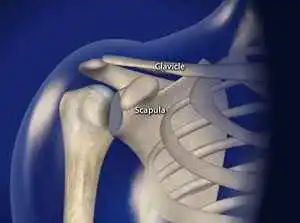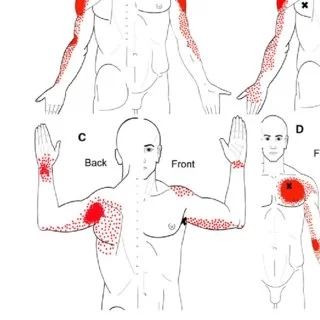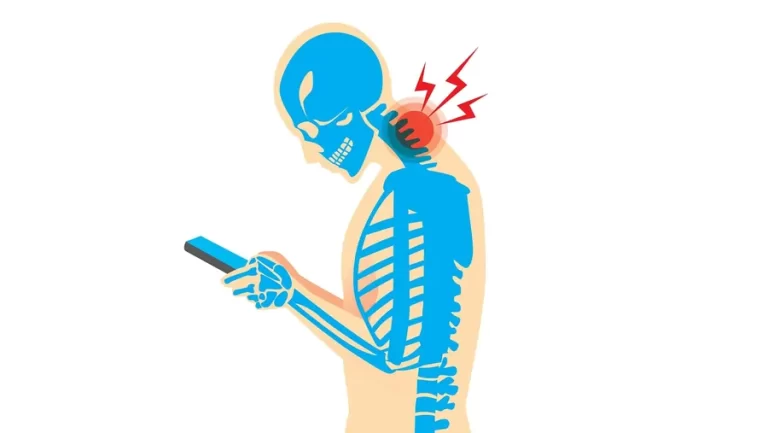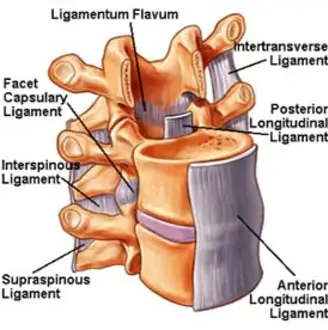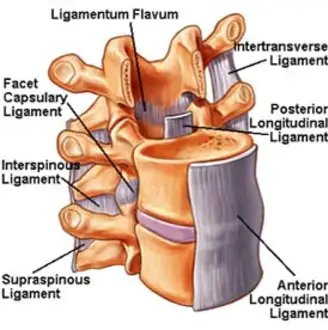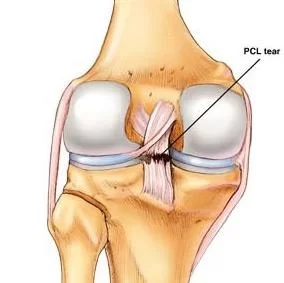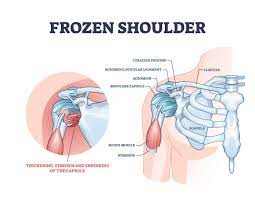Shoulder Subluxation
Introduction
Shoulder subluxation occurs when the lining of the shoulder joint (the capsule), ligaments, or labrum become strained, torn, or detached, causing the ball of the shoulder joint (humeral head) to move entirely or partially out of its socket.
Individuals with shoulder subluxation typically experience pain when their shoulder “gives way.”
A physical examination together with X-rays is used to determine various possible causes of shoulder pain and diagnose shoulder subluxation. Shoulder subluxation can be treated non-operatively or surgically.
This article will cover the signs and treatment options for shoulder subluxation. We also talk about the recovery process and exercises that can help.
What exactly is a Shoulder Joint?
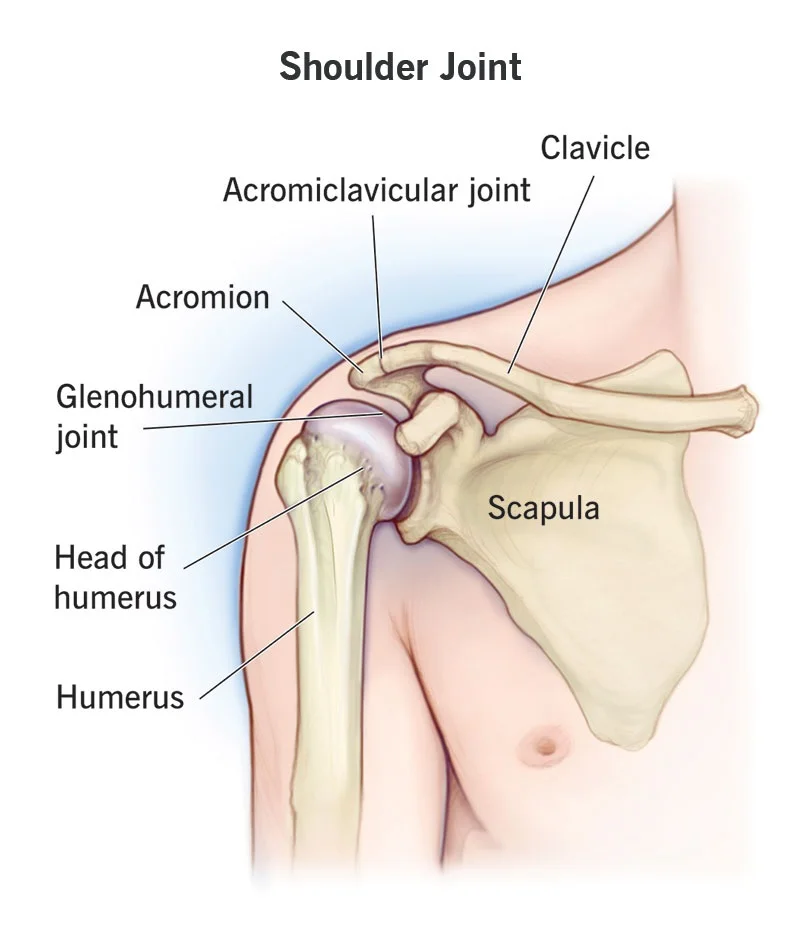
The shoulder is a ball-and-socket joint that allows for a large range of motion. The ball of the humerus (humeral head) is intended to remain near the socket, similar to a ball bearing in a holder. The humeral head is anchored into the socket by the lining of the joint (the capsule), thickenings of the capsule known as ligaments, and a cartilage rim.
What is Shoulder Subluxation?
- The shoulder joint is one of the most often misplaced joints in the body, hence shoulder subluxation and shoulder pain, in general, can significantly negatively impact your life.
- Shoulder subluxation is one of the more prevalent types of shoulder dislocation, though there are others as well. The humerus head, or arm bone, partially separates from the glenoid, or socket, resulting in subluxation, which is also recognized as partial shoulder joint dislocation.
- Your shoulder dislocates, completely separating the humerus, or head of the humerus, from the glenoid cavity. Nevertheless, the head of the arm only partially emerges from the socket when there is a subluxation of the shoulder.
- Shoulder subluxation can cause your humerus to shift forward, backward, or downward. It can also cause the muscles, ligaments, or tendons surrounding the shoulder joint to rupture.
- You should be aware that due to its mobility, the shoulder is one of the joints that is most easily damaged or dislocated. You can lift weights, swing your arms, toss a baseball or basketball, and use your shoulders normally with this same mobility. Particularly in the case of athletes.
- Shoulder subluxation can also happen after a prolonged time of identical movements (e.g., a baseball, AFL, or rugby player). Shoulder subluxation can also be caused by swinging your arms too hard or too quickly, such as while throwing a ball under or overhand.
Shoulder Subluxation vs. Shoulder Dislocation
- Shoulder subluxation is the term for a partial shoulder dislocation. When the shoulder ball moves out of its natural position but does not completely dislocate from the glenoid fossa, it is referred to as a humeral head subluxation.
- The glenoid fossa, or shoulder socket, is completely separated from the humeral head of the shoulder during a complete dislocation. The most typical cause of a dislocation is abrupt impact damage, but repetitive motions that destroy cartilage, ligaments, and muscles can result in a subluxation.
- During shoulder subluxation and dislocation, the capsule, ligaments, or labrum may be strained, ripped, or separated from the bone. These components have the potential to heal in a stretched or loose position once the humeral head is returned to place, which could raise the risk of further subluxation or dislocation episodes.
- Further tissue damage may result from each subsequent incident, raising the likelihood of future instability.
Epidemiology
- The majority of studies concentrate more on shoulder dislocations than the epidemiology of shoulder subluxations, which is a subject of limited research.
- Forty-five percent of the participants in a study on shoulder subluxations had repeated shoulder subluxations, whereas 45.5% of the participants had only one subluxation event.
- Patients with hemiplegic stroke or upper limb paralysis often experience shoulder subluxations (see Hemiplegic Shoulder Subluxation). The observed incidence ranges widely, from 17% to 81%.
Causes of the Shoulder Subluxation
The shoulder is capable of dislocating forward, backward, or downward since it can move in multiple planes. The same applies to subluxations. A partial dislocation may become more difficult to treat if the shoulder capsule is ripped or strained.
The humerus rarely pops out of position unless there is a severe impact or fall. The arm may potentially be pulled out of its socket by extreme rotation. A shoulder dislocation might make the joint unstable and more prone to subluxations or other dislocations in the future.
Frequently, a shoulder subluxation happens on by:
- Accidental Injury. Subluxation may arise from accidents or incidents that injure the shoulder joint or other stability-supporting structures. Auto accidents and falls are two common examples.
- A sports-related injury. Shoulder subluxations are frequently caused by contact sports like football and hockey as well as by activities involving falls like gymnastics and skiing.
- Stroke. Muscle weakness caused by strokes frequently results in shoulder joint destabilization and subluxation. Eighty percent of stroke survivors also had a subluxation of the shoulder, based on examination.
The highest risk of subluxation is seen in younger males and other populations that engage in intense physical activity.
Symptoms of the Shoulder Subluxation
Painful and stiff joints might result from shoulder subluxation. It can be more challenging to diagnose a subluxation than a total dislocation. On the other hand, the partially dislocated humerus may occasionally be seen through the skin.
The ball of the humerus may be felt moving in and out of the shoulder socket; this movement is typically painful and uncomfortable. A shoulder subluxation may cause the following symptoms.
Symptoms may include
- A malformed or misaligned shoulder
- Shoulder Pain
- Swelling
- Paresthesia, or numbness or tingling, along the arm
- Difficulty in moving the joint
a clicking or catching sensation in the shoulder during daily activities, particularly those that require reaching overhead.
Diagnosis of the Shoulder Subluxation
Examination
- The patient should first be questioned by the examiner on the history of the reason for his arm subluxation. After that, he can conduct an inspection. However, before doing so, he must ensure that he can simultaneously observe both shoulders to detect any differences.
Functional test
- When the patient lifts their arm into a throwing stance and rotates it in the internal rotation direction, the subluxation test is positive = resistance is supplied.
- A frontal capsule lesion is indicated by pain in the ventral capsule.
- Ventral gliding may be induced by applying pressure to the dorsal aspect of the humerus during a resistance test. The outcome is often a subluxation to the front and an abrupt discomfort in the shoulder. This test can be performed with or without upper arm support, and at varying degrees of abduction.
Radiographic examination
- It is thought that radiographic measures provide the most accurate means of determining the extent of subluxation.
- Before looking at your shoulder, your doctor will get a physical and ask about your problems. To determine whether the bonehead has completely or partially separated from the shoulder socket, you might require X-rays. X-rays can also reveal injuries to the shoulder, such as shattered bones.
- Your doctor can assist in realigning your shoulder and create a treatment plan once they have determined the extent of your problem.
Differential Diagnosis
- Biceps Tendinopathy: This stands for biceps tendon inflammation. Biceps tendinopathy is a prevalent cause of shoulder pain because of the tendon’s location.
- Collarbone injuries: A fracture or other injury to the clavicle, also called the collarbone, may cause shoulder pain and difficulty moving the joint.
- Rotator cuff injury: It is common for people of all ages to experience shoulder pain due to injuries to the rotator cuff tendon.
- Shoulder dislocation: The upper arm bone completely separates from the shoulder socket after a dislocation. Only a trained medical practitioner may be able to differentiate between the symptoms, as they are identical to those of a subluxation.
- Swimmer’s shoulder
- Swimmer’s shoulder is a common term for shoulder soreness experienced by competitive swimmers. Swimmers frequently have hypermobility of the joint and a higher risk of injury since swimming demands a high degree of shoulder flexibility and range of motion.
Treatment for Shoulder Subluxation
Reestablishing the shoulder’s alignment is crucial. It is safer to have a doctor use this procedure at an emergency room or doctor’s office, even if it can be done on the field or wherever the injury happened.
Closed-reduction
- A closed reduction is a method used by medical professionals to realign the shoulder capsule. You could be prescribed painkillers in advance of this procedure because it can be uncomfortable. Alternatively, you could get general anesthesia and sleep painlessly.
- Your arm will be slowly rotated and moved by your doctor until the bone repositions itself. After the ball is repositioned, the pain should subside. After that, your doctor might order X-rays to confirm that your shoulder is properly positioned and free of any additional injuries.
Immobilization
- You will be required to immobilize your shoulder joint for a few weeks soon after a closed reduction by putting on a sling. Stopping the joint from moving will stop the bone from coming out once more. As the injury heals, keep the shoulder in a sling and refrain from doing too much stretching or moving.
Medications
- After the physician completes a closed reduction, the patient should experience less pain from the subluxation. If your pain persists, your physician can recommend a medication like hydrocodone or acetaminophen (Norco).
- However, you should not use prescription medications for more than a few days at a time.
- Try an NSAID like ibuprofen (Motrin) or naproxen (Naprosyn) if you require longer-lasting pain relief. These drugs can lessen shoulder pain and edema. Don’t take more medication than is advised; instead, adhere to the directions on the packaging.
Surgery
- If you experience recurrent bouts of subluxation, surgery might be necessary. Any issues resulting in an unstable shoulder joint can be resolved by your surgeon.
- It consists of torn ligaments, rotator cuff tears, and fractures of the humerus head or socket.
- Shoulder surgery will be performed using extremely tiny incisions. An arthroscopy is this. An arthrotomy, an open operation, or reconstruction, may be necessary in certain cases for this. You will require therapy following surgery to restore shoulder mobility.
Physical therapy for Shoulder Subluxation
Following surgery or the removal of the sling, physical therapy can aid in your shoulder’s regaining strength and mobility. You will learn mild exercises from your physical therapist to build stronger muscles that stabilize your shoulder joint. Some of these methods may be employed by your physical therapist:
- Therapeutic massage
- Improving flexibility by moving the joint in a variety of ways or mobilizing it
- Exercises for stability
- Strength exercises
- Ice pack
- Ultrasound therapy
A schedule of exercises that you can perform at home will also be provided. You have to perform these exercises as frequently as your physical therapist advises. Refrain from sports and other activities that could result in further injury.
Prognosis
When there is only a minor subluxation and no significant nerve or tissue damage, the damaged shoulder joint should heal fast. On the other hand, if someone becomes involved too soon, they might feel a dislocation later on. A surgeon treating a dislocated shoulder will frequently advise wearing a sling for a few weeks after the procedure. A patient receiving physical therapy might progressively regain their strength and range of motion. To avoid difficulties, it is important to avoid making strong motions with the shoulder.
Complications for Shoulder Subluxation
It’s critical to understand the potential complication of shoulder subluxation. The humerus is kept centered in its socket by the robust ligaments, muscles, and connective tissue that make up the shoulder. Subluxations or dislocations may become more difficult to treat if these structures are overextended or damaged.
The following are a few outcomes of a subluxation of the shoulder:
- Injury to the shoulder’s nerves and blood vessels.
- Additional shoulder concerns, such as muscle or ligament tears.
- A reduction in flexibility and movement.
- Instability in the shoulder that causes recurrent subluxations.
Home care
- Apply ice: Several times a day, place an ice pack or cold pack on your shoulder and hold it there for 15 to 20 minutes. Ice is a great way to ease pain and minimize swelling immediately after an accident. A few days later, you can convert to heating.
- Rest: Shoulder dislocations are more prone to recur once they have occurred once.
Prevention for Shoulder Subluxation
- Steer clear of any activity like throwing or lifting heavy objects that could cause your humerus to pop out of its socket.
- When you feel ready, gradually resume sports and other activities, utilizing only your shoulder.
- Improve your flexibility by performing the daily exercises that your physical therapist has prescribed.
- Regular mild exercises will keep the shoulder joint from stiffness.
Summary
Shoulder subluxations can be effectively treated when the patient seeks prompt medical attention and receives an accurate diagnosis. In cases where surgery is not required, recovery may take several months, during which time the effectiveness of the treatment becomes more evident.
The duration of recovery depends on the severity of the subluxation and whether surgical intervention was necessary. To prevent recurrence, patients should avoid strenuous activities and heavy exercise immediately after treatment, allowing the shoulder to heal properly and regain stability.
FAQs
How can a subluxated shoulder be fixed?
A closed reduction is one method of treating shoulder subluxation. To put it another way, this method entails rotating and moving the arm to realign the shoulder until the humerus glides back into the glenoid, or, to put it more simply, the arm bone is back in its socket.
How can one experience a subluxation of the shoulder?
A quick, acute pain that feels like something is slipping or squeezing in the shoulder is usually the result of a subluxation. The shoulder can become so lax that frequent dislocations occur.
Can a subluxation of the shoulder repair itself?
Even while shoulder subluxations frequently recover without significant consequences, it’s crucial to understand any potential hazards related to the injury. Subluxations have the potential to worsen joint discomfort and instability if left untreated. They may also impede mobility or result in persistent pain in certain situations.
How is a shoulder subluxation different from a dislocated shoulder?
It is possible to aggressively sublux or dislocate the humeral head when there is considerable damage to a joint that was previously normal. When the humerus rapidly slips partially in and out of place, it results in a shoulder subluxation. When the humerus fully exits the glenoid, shoulder dislocations happen.
How long does a subluxation take to heal?
Mild subluxation can take several weeks to cure with rest, physical therapy, and over-the-counter pain relievers. A more severe subluxation may require several months to recover. To restore range of motion and strength, it may be necessary to immobilize the patient in a sling or brace for some time before beginning physical therapy.
What not to do after a shoulder subluxation?
Stay away from sports, lifting, and overhead movement over the next six weeks. Drivers shouldn’t operate while wearing a sling. You can return to work as soon as you are capable of doing your usual duties.
References
- Dhameliya, N. (2024, February 24). Shoulder Subluxation – Mobile Physiotherapy Clinic. Mobile Physiotherapy Clinic. https://mobilephysiotherapyclinic.in/shoulder-joint-subluxation/
- Shoulder Instability. (2023, March 21). Johns Hopkins Medicine. https://www.hopkinsmedicine.org/health/conditions-and-diseases/shoulder-instability#:~:text=A%20shoulder%20subluxation%20occurs%20when,into%20place%20with%20medical%20assistance.
- Vitoonpong, T., & Chang, K. (2023, April 6). Shoulder Subluxation. StatPearls – NCBI Bookshelf. https://www.ncbi.nlm.nih.gov/books/NBK507847/
- What to know about shoulder subluxation. (2023, June 26). https://www.medicalnewstoday.com/articles/321902
- Watson, S. (2018, September 18). How to Identify and Treat Shoulder Subluxation. Healthline. https://www.healthline.com/health/shoulder-subluxation
- Shoulder Instability: Treatment, Diagnosis, & Causes | Massachusetts General Hospital. (n.d.). Massachusetts General Hospital. https://www.massgeneral.org/orthopaedics/sports-medicine/conditions-and-treatments/shoulder-instability

